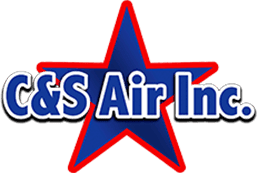For business owners in Mansfield, TX, maintaining optimal air quality and comfort in your commercial spaces isn’t just about customer satisfaction—it’s also crucial for employee productivity and health. Let’s explore the most common ventilation issues and how you can address them to keep your indoor environment fresh and inviting!
Poor Air Circulation🍃🌬️
The Issue:
Inadequate air circulation is a prevalent issue in many commercial spaces, leading to an environment that feels stuffy and uncomfortable. This problem arises from a variety of factors, including outdated HVAC systems, improper layout of furniture and equipment, and an insufficient ventilation system. Poor circulation or air distribution contributes to increased humidity levels and the buildup of pollutants like dust, mold spores, and VOCs (Volatile Organic Compounds), making the indoor air quality poor. Occupants might experience symptoms such as headaches, fatigue, and eye irritation, which can significantly decrease their well-being and productivity.
The Solution:
- Regular Maintenance: One of the most effective ways to ensure optimal air circulation is through regular, comprehensive maintenance of your HVAC system. This includes cleaning or replacing air filters, checking and cleaning ducts, and ensuring that all components of the system are functioning efficiently. Routine maintenance prevents the accumulation of dust and debris, which can obstruct airflow and reduce the system’s effectiveness.
- Upgrade Your System: Technology in the HVAC industry is continually advancing, with newer models designed to provide superior air circulation and filtration. If your current system struggles to maintain good air quality, consider upgrading to a more powerful unit or one that better suits the specific demands of your commercial building and provides adequate ventilation. Modern HVAC systems often come with features like variable speed fans and advanced filtration systems, which can significantly enhance indoor air circulation and remove pollutants more effectively.
- Rearrange Space Layout: Sometimes, the solution doesn’t involve the HVAC system itself but rather how the space is organized. Large pieces of furniture, machinery, or even partitions can obstruct airflow, creating dead zones where air feels stagnant. Reassessing and rearranging your space to ensure vents are unblocked and air can move freely can have a substantial impact on improving air circulation. Consider consulting with an HVAC professional or an interior designer who can provide insights on optimizing the layout for better airflow.
- Implement Additional Ventilation Solutions: For areas that require extra ventilation, such as kitchens, bathrooms, or spaces with high occupancy, consider adding supplementary fans or exhaust systems. These can work in tandem with your existing HVAC system to enhance air exchange and remove excess humidity and odors, further improving the comfort and air quality of your space.
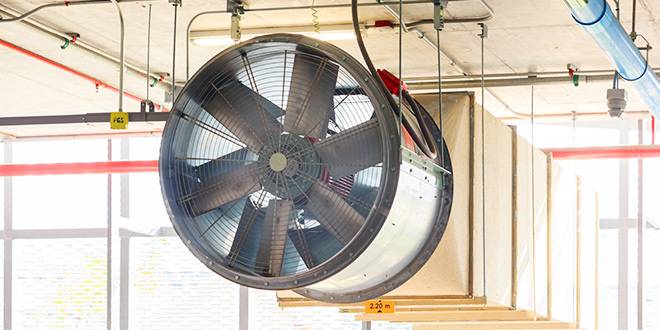
Excessive Humidity💦😥
The Issue:
Excessive humidity within commercial spaces is more than just a discomfort; it’s a catalyst for a host of problems that can affect the health of the occupants and the integrity of the building and its contents. When indoor environments become too humid, they not only feel unpleasantly warm but also become breeding grounds for mold and mildew. This can lead to health issues like allergies and respiratory problems. Moreover, high humidity levels can wreak havoc on electronic equipment, leading to malfunctions or permanent damage, and can even cause structural damage over time by warping wood and corroding metal fixtures.
The Solution:
- Dehumidifiers: The use of commercial-grade dehumidifiers is one of the most direct approaches to tackling high humidity. These units work by extracting moisture from the air, thus helping to maintain a comfortable and safe humidity level. Portable dehumidifiers can be used in specific problem areas, while whole-building solutions can integrate with existing HVAC systems to control moisture throughout the entire space.
- Proper Ventilation: Effective ventilation is crucial in managing humidity, especially in areas prone to moisture generation, such as kitchens, bathrooms, laundry facilities, and indoor pool areas. Exhaust fans and ventilation systems should be installed and regularly maintained to ensure they are functioning correctly, expelling humid air from the building and replacing it with drier air from outside. This not only helps in reducing moisture but also aids in removing odors and contaminants.
- HVAC Upgrades: Modern HVAC systems are equipped with features specifically designed to improve humidity control. Variable speed fans adjust their speed based on the needs of the indoor environment, providing more precise control over air movement and moisture removal. Additionally, many of today’s systems include built-in dehumidification functions that actively work to remove moisture from the air as part of the cooling process. Upgrading to such a system can significantly improve your ability to manage indoor humidity levels effectively.
- Regular Maintenance: Beyond installing the right equipment, regular maintenance of your HVAC and ventilation systems is vital to ensure they continue to operate efficiently. This includes cleaning ducts, replacing filters, and checking for any leaks or blockages that could impede their function. Routine checks can identify potential issues before they escalate, saving time and money in the long run.
- Architectural Considerations: For new buildings or those undergoing significant renovations, architectural elements can contribute to natural dehumidification. Design choices such as proper insulation, vapor barriers, and materials that do not absorb moisture can help in minimizing indoor humidity.
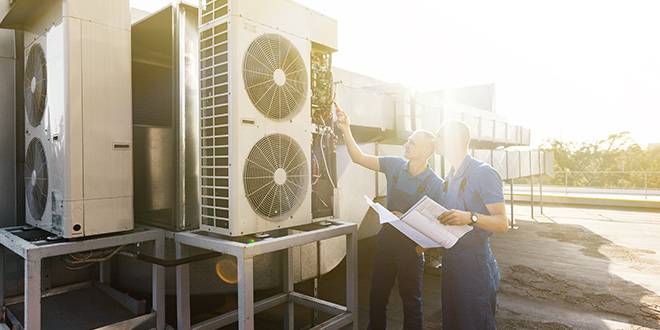
Unpleasant Odors👃🤢
The Issue:
Unpleasant odors in a commercial setting can be more than just a minor nuisance; they can significantly impact the perception of your business and the comfort of those inside. These smells can originate from a variety of sources such as mold growth due to excessive moisture, bacteria from stagnant water, or even external pollution making its way indoors. Beyond the immediate discomfort, persistent bad smells can be indicative of underlying air quality or hygiene issues that need to be addressed to ensure a healthy indoor environment.
The Solution:
- Identify and Eliminate the Source: The first step in tackling unpleasant odors is to identify and address their source directly. This may involve repairing leaks that contribute to mold growth, improving waste management practices to prevent the accumulation of garbage-related odors, or installing better sealing and insulation to keep out external pollutants. Addressing the root cause of the odor is essential for a long-term solution.
- Improved Filtration: Upgrading to high-efficiency particulate air (HEPA) filters in your HVAC system can have a significant impact on indoor air quality, including the reduction of odors. HEPA filters are capable of capturing particles as small as 0.3 microns, which includes most odor-causing bacteria and mold spores. By trapping these particles, the filters prevent them from circulating through your indoor air.
- Regular Duct Cleaning: The ventilation ducts are the lungs of your commercial space, distributing air throughout the building. Over time, these ducts can accumulate dust, mold, and other debris that not only impede airflow but can also contribute to the spread of unpleasant odors. Regular cleaning of the ductwork ensures that air can flow freely and remains clean and fresh. Professional duct cleaning services can remove these contaminants from your ducts, significantly improving the smell of your indoor environment.
- Use of Air Purifiers: In addition to improving the filtration within your HVAC system, standalone air purifiers can be strategically placed in areas prone to bad smells. Air purifiers equipped with activated carbon filters are particularly effective at absorbing and neutralizing a wide range of odors, offering an additional layer of odor control.
- Maintain Dry and Clean Environments: Moist and dirty environments are breeding grounds for odor-causing bacteria and mold. Regular cleaning schedules, prompt addressing of spills and leaks, and the use of dehumidifiers in particularly damp areas can prevent the development of these odor sources.
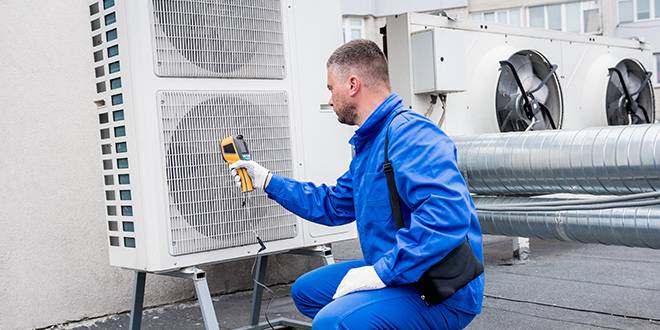
Inconsistent Temperatures🥵🥶
The Issue:
Inconsistent temperatures in a commercial setting, characterized by hot and cold spots, are not just a minor inconvenience; they can significantly impact the comfort and productivity of occupants. Additionally, these temperature variances can be detrimental to temperature-sensitive equipment and products, leading to potential losses. Often, these issues stem from inadequate ventilation design, poor insulation, or an HVAC system that’s not optimized for the space’s unique needs.
The Solution:
- Zoning Systems: A zoning system allows for the division of your commercial space into different areas or “zones,” each controlled independently by its own thermostat. This means you can set different temperatures for different areas based on their specific needs and usage, effectively eliminating hot and cold spots. Zoning systems are particularly useful in buildings where different rooms have varying sun exposure, occupancy levels, and equipment heat output. Implementing zoning provides precise temperature control, ensuring comfort throughout your space and potentially leading to energy savings by not overheating or overcooling certain areas.
- Thermal Load Assessment: A critical step in resolving inconsistent temperatures is understanding the specific thermal characteristics of your space. A professional thermal load assessment evaluates various factors, including insulation quality, window sizes and locations, occupancy, and equipment heat output, to determine how heat is gained and lost throughout the building. This comprehensive analysis can identify areas that require additional ventilation, insulation, or other modifications to stabilize temperature variations. Addressing these areas based on the assessment’s findings can significantly improve overall temperature consistency.
- Regular Maintenance: Routine maintenance of your HVAC system plays a vital role in preventing temperature inconsistencies. Over time, components can wear down, filters can become clogged, and ducts can accumulate debris, all of which can impede the system’s efficiency and lead to uneven heating and cooling. Regularly servicing your system ensures that all parts are in good working order, air filters are clean, and ductwork is clear, promoting optimal airflow and distribution. Scheduled maintenance not only helps in maintaining consistent temperatures but also extends the lifespan of your HVAC system and can prevent costly repairs down the line.
- Insulation and Air Sealing Improvements: Enhancing the insulation in walls, ceilings, and floors, and sealing leaks around windows, doors, and other openings can significantly reduce thermal exchange between the interior and exterior of the building. This step helps in maintaining consistent temperatures by preventing warm air from escaping during the winter and hot air from entering during the summer. Investing in insulation and air sealing is a cost-effective way to improve temperature control and energy efficiency.
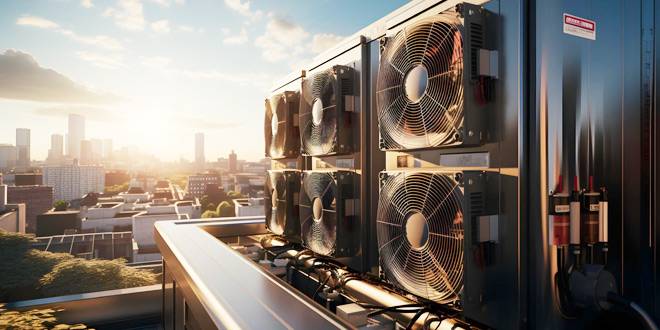
Indoor Air Pollution🌱
The Issue:
Indoor air quality is a critical aspect of maintaining a healthy and comfortable environment, especially in commercial spaces where many people spend a significant portion of their day. Unfortunately, indoor air can be more polluted than outdoor air, containing a mix of dust, pollen, volatile organic compounds (VOCs), bacteria, and other harmful substances. Factors like poor ventilation, inadequate filtration, and external pollution sources contribute to the accumulation of these pollutants indoors, potentially leading to various health issues such as allergies, respiratory problems, and even long-term health effects. Moreover, poor indoor air quality can decrease overall comfort and productivity, impacting both employees and customers.
The Solution:
- Upgrade Air Filters: One of the most effective ways to combat indoor air pollution is by upgrading the air filters in your HVAC system. High-quality filters, such as those rated MERV 13 or higher, are designed to trap much smaller particles, including fine dust, pollen, and some types of VOCs. These filters ensure that the air circulating through your space is cleaner, contributing significantly to the overall air quality. Remember, higher efficiency filters may require more frequent changes and can impact airflow, so it’s essential to consult with an HVAC professional to find the right balance for your system.
- Increase Outdoor Air Intake: Improving ventilation by increasing the intake of fresh outdoor air is another crucial step in diluting and removing indoor pollutants. Modern HVAC systems can be adjusted to enhance the amount of outside air brought in, which helps to flush out pollutants and reduce indoor air contamination. This approach is particularly effective when combined with upgraded filtration, as it ensures that the incoming air is both fresh and clean. However, it’s important to monitor outdoor air quality and adjust intake accordingly, especially during high-pollution days.
- Regular Air Quality Assessments: Conducting periodic air quality assessments is essential for identifying the specific pollutants present in your indoor environment. Professional air quality testing can detect a wide range of contaminants, from VOCs emitted by paints and furnishings to microscopic dust and mold spores. These assessments provide valuable insights into the effectiveness of your current air quality management strategies and highlight areas that may need improvement. Based on the results, targeted actions can be taken to address specific issues, such as enhancing cleaning protocols, addressing sources of VOCs, or improving moisture control to prevent mold growth.
- Implementing Air Purification Systems: In addition to the measures mentioned above, installing air purification systems can offer an extra layer of protection against indoor air pollutants. These systems, which can be standalone units or integrated into your HVAC system, use various technologies, including HEPA filtration, activated carbon, and UV light, to further clean the air circulating within your space.

🌟 Conclusion: Breathe Easy with Expert Solutions
Ventilation issues in commercial spaces require careful attention and strategic action to ensure the health, comfort, and productivity of everyone inside. From addressing humidity challenges to eliminating bad odors, the key is a combination of regular maintenance, system upgrades, and professional advice.
Elevate Your Air Quality with C&S Air Inc.
Is your commercial space facing ventilation challenges? C&S Air has the expertise and solutions to transform your indoor environment. Whether it’s upgrading your HVAC system, tackling humidity, or ensuring that your air is clean and fresh, our team is ready to help. We also offer commercial vent hood repair and paint booth ventilation services. Don’t let ventilation issues hold your business back. Contact C&S Air Inc. today, and let’s create a healthier, more comfortable space for your employees and customers.
